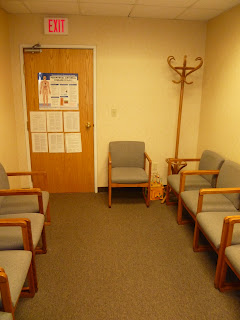A bunion is an enlargement of the joint at the base of the big toe- the metatarsophalangeal (MTP) joint- that forms when the bone or tissue moves out of place. This forces the toe to bend toward the others, causing an often painful lump of bone on the foot. Since this joint carries much of the weight while walking, bunions can cause extreme pain if left untreated.
The MTP joint itself may become stiff and sore, making wearing shoes sometimes difficult or impossible.
Bunions are a symptom of faulty foot development and are usually caused by the way we walk, our inherited foot type, our shoes, or other reasons. Although bunions tend to run in families, it is the foot type that is passed down- not the bunion. Other causes of bunions are foot injuries, neuromuscular disorders, or congenital deformities. People who suffer from flat feet or low arches are also prone to developing these problems, as are arthritic patients and those with inflammatory joint disease.
Treatment options vary with the type and severity of each bunion, although identifying the deformity early in its development is important in avoiding surgery. Podiatric medical attention should be sought at the first indication of pain or discomfort because, left untreated, bunions tend to get larger and more painful, making nonsurgical treatment less of an option. The primary goal of most treatment options is to relieve pressure on the bunion and halt the progression of the joint deformity.
A podiatric physician may recommend one or more of the following treatments: padding and taping to minimize pain, medication to ease the pain and inflammation, physical therapy (such as ultrasound), and orthotics (shoe inserts) to control foot function and reduce symptoms.
When conservative treatments fail or the bunion progresses past the threshold for such options, podiatric surgery may become necessary to relieve pressure and repair the toe joint. Several surgical procedures are available to the podiatric physician. the surgery will remove the bony enlargement, restore a more appropriate alignment of the toe joint, and relieve pain.
A simple bunionectomy, in which only the bony prominence is removed, may be used for the less severe deformity. Severe bunions may require a more involved procedure, which includes cutting the bone and realigning the joint.
Recuperation takes time, and swelling and some discomfort are common for several weeks following surgery. Pain, however, is easily managed with medications prescribed by your podiatric physician.
For more information on bunions, visit our website: http://www.ctfootcare.com/bunions.html
Connecticut Foot Care Centers
Podiatrists in CT


























